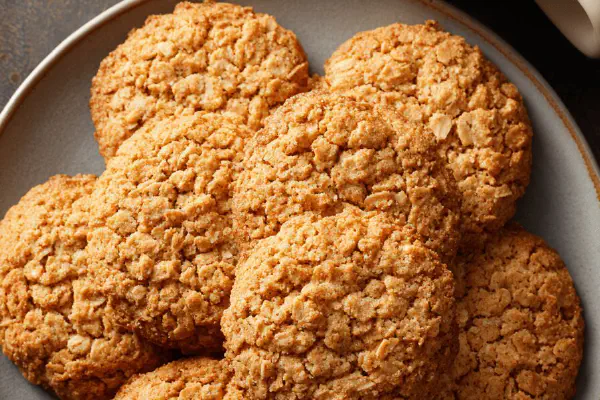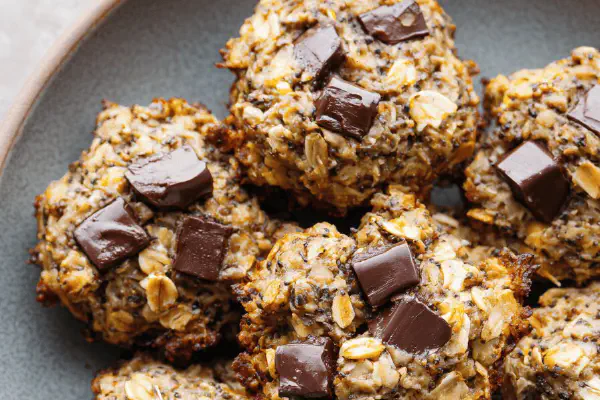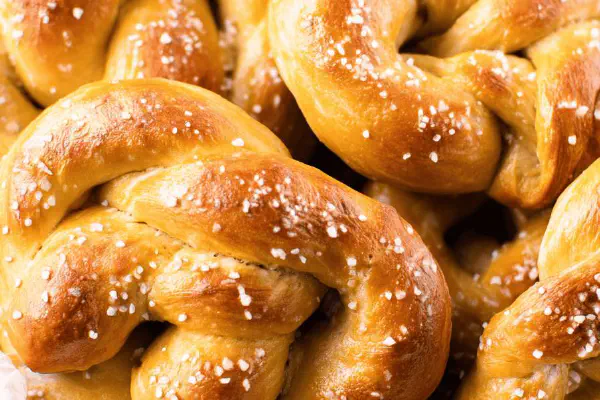Crunchy Oat Biscuits

By Emma
Certified Culinary Professional
Ingredients
- 200 ml all-purpose flour
- 150 ml whole wheat flour
- 250 ml quick-cooking oats
- 3 ml baking powder
- 1/4 tsp fine sea salt
- 120 ml melted coconut oil
- 180 ml pure maple syrup
- 65 ml almond milk or any plant milk
- 5 ml ground cinnamon
About the ingredients
Method
- Arrange oven rack center. Preheat oven to 190°C (375°F). Line two baking sheets with parchment paper.
- In a medium bowl, whisk flours, oats, baking powder, cinnamon, and salt. Mix well to distribute evenly—critical for crumbly uniform texture.
- In another bowl, combine coconut oil and maple syrup until glossy. Stir in almond milk gradually until smooth but thick enough to hold scoops. This liquid mix is crucial, not too runny or drying.
- Pour dry ingredients into wet bowl. Using a wooden spoon or sturdy spatula, fold gently just until dough forms—avoid overmixing. Dough should be sticky, hold shape but soft enough to drop off spoon with some effort.
- Scoop approx 30 ml (2 tbsp) per biscuit onto sheets. Leave at least 6 cm (2.5 inches) apart, spread can cause mushy edges.
- Bake one sheet at a time, bottom rack for about 18 minutes. Watch edges: when golden brown and biscuit feels firm to touch but not hard, it's done.
- Cool on baking sheet 5 minutes. Transfer to wire rack to crisp bottom and cool completely. If left too long on hot sheet, biscuits steam and soften—ruins crunchy texture.
Cooking tips
Chef's notes
- 💡 Dry ingredients first always—whisk well for aeration. Skip lumps or you’ll find dense pockets bitterly underdeveloped. Cinnamon mixed thoroughly with flours, salt. Critical for even scent throughout batter. Watch texture when folding wet into dry—sticky, not paste or batter. Wooden spoon, no electric mixers. Overmixed gluten strangles tenderness.
- 💡 Cooling is serious business. After baking, leave biscuits on parchment 5 minutes—stop steaming, prevent soggy bottoms. Transfer to wire rack’s air flow. Skipping cool step ruins crunch. Moisture holds if trapped, turns edges limp. Timing varies by oven heat spots; eyes on color changes and springy tops, not just timer.
- 💡 If dough spreads too thin and biscuits run, chill it 15 mins minimum. Cooler dough thickens, less spread. Alternatively, swap oats for oat flour. Denser, yes. Add extra milk to compensate moisture loss. Butter instead of coconut oil means melt, cool before mixing. Avoid cooking milk or eggs early, that ruins structure.
- 💡 Use quick-cooking oats mostly. Rolled oats pulse briefly to mimic texture but watch—too fine turns dough pasty, too coarse breaks crumb. Maple syrup wetter than sugar alters hydration. Never swap with honey—too sticky, messes crumb without more liquid reduction. Adjustments here need precision.
- 💡 Bake single sheet at a time, bottom rack for consistent heat. Hot oven, parchment paper crucial. Watch edges closely—golden brown, firm touch but not rock. Press gently top; spring back means done. Mushy, bake longer. Burnt spots sign ovens vary; learn yours. Freeze cooled biscuits airtight, thaw on rack for crisp revival.
Common questions
Can I use regular sugar instead of maple syrup?
Not really. Maple syrup wetter, affects dough moisture tight balance. Sugar dries batter, changes chew. If swapping, cut back liquid else biscuits turn dry, crumbly. Maple brings flavor complexity too, absent with sugar.
Why do my biscuits spread too much?
Usually warm dough or too much liquid. Chill dough 15 mins to fix. Using honey? Sticky mess without reducing liquid extras. Oats grind coarser or coarse flour gives structure, stops run. Overmixing gluten also culprit; fold gently only.
How to store these biscuits?
Airtight container at room temp works, crisp holds best few days. Refrigerate? Moisture changes texture, softens edges. Freeze for longer storage, defrost on wire rack so moisture escapes, not clumps. Avoid sealing hot—condensation ruins crunch.
Can I substitute almond milk with cow milk?
Yes but note fat difference slightly changes mouthfeel. Dairy milk adds richness; plant milk keeps things lighter, dairy-free. Adjust oil or syrup to balance fat. Butter swap for coconut oil shifts flavors, richer notes; melt and cool before mixing.



